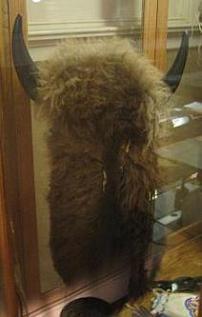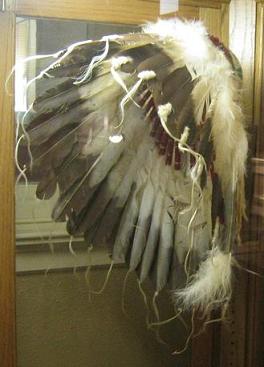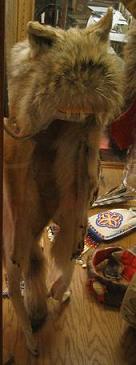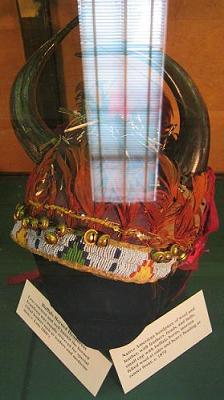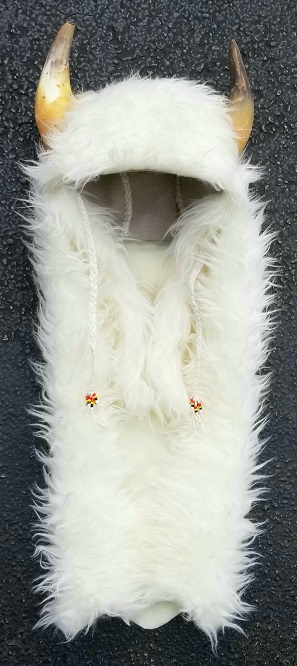Subject: lobo 'wolf' warrior
Culture: Comanche
Setting: frontier raids and warfare, Comancheria/Texas/Mexico 1836-1874
Object: headdress
Fort Worth Museum of Science and History > Cattle Raisers Museum *
"Headdress, ca. 1900,
worn by Comanche Chief Quanah Parker,
given by the Chief to Stephen Keys Titus
Leather, 64 eagle feathers, beads" ...
* Hall of State at Fair Park
"Buffalo Horned Headdress
Less common and well known the horned headdress was usually reserved from special tribal leaders such as leaders [sic] and medicine men;
c. Late 1800's
* Stockyards Museum
* Stockyards Museum
*
* Stockyards Museum
"Eagle Feather Headdress: A man who was entitled to wear a buffalo horn headdress might also wear the eagle feather bonnet. This was made of a hide skullcap with 28 to 32 eagle trail feathers placed in a circle around the base with a single or double tail. Each part of the headdress had a special meaning understood by all members of a tribe.
"Because the golden eagle flew so close to the sun, the feathers represented radiant shafts of light bringing down enlightenment to the warrior. The bonnet's tails represented the buffalo's backbone. The eagle's soft white 'breath' feathers tied to the base of each tail feather were there to remind the warrior to ride into battle like that feather, moving with the breeze so that an enemy's arrows and bullets would pass by or through him with no harm.
"This headdress, including the beaded band, is a reproduction of one worn by Quanah Parker, last war chief of the Comanches. It was made with painted turkey feathers simulating eagle feathers. Federal law allows only members of Native American tribes to possess actual eagle feathers."
* Doss Center > Native Americans
"Buffalo Horn Ceremonial Bonnet
This ceremonial bonnet in the Plains Indian style was worn by a Comanche medicine man. A headdress like this had to be earned and could never be worn without the consent of the tribal leaders.
"Bonnets were decorated with feathers earned in battle or for community services, in the case of the chief, and all had special meaning to the wearer and other members of the group. This headdress is made from the skin of a buffalo's forehead including the horns, and features red woolen trade cloth, eagle feathers, beadwork and silver adornments."
